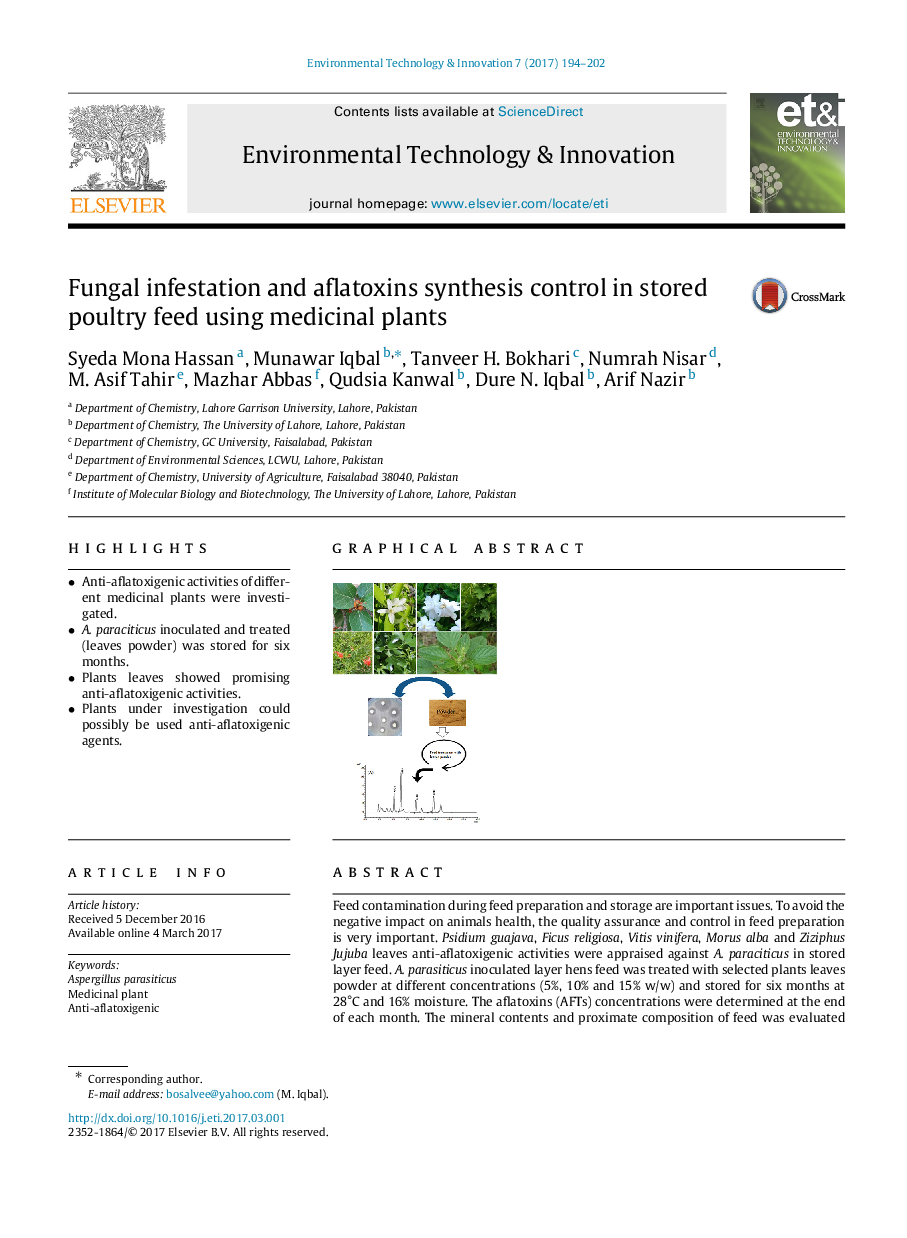| Article ID | Journal | Published Year | Pages | File Type |
|---|---|---|---|---|
| 5749644 | Environmental Technology & Innovation | 2017 | 9 Pages |
â¢Anti-aflatoxigenic activities of different medicinal plants were investigated.â¢A. paraciticus inoculated and treated (leaves powder) was stored for six months.â¢Plants leaves showed promising anti-aflatoxigenic activities.â¢Plants under investigation could possibly be used anti-aflatoxigenic agents.
Feed contamination during feed preparation and storage are important issues. To avoid the negative impact on animals health, the quality assurance and control in feed preparation is very important. Psidium guajava, Ficus religiosa, Vitis vinifera, Morus alba and Ziziphus Jujuba leaves anti-aflatoxigenic activities were appraised against A. paraciticus in stored layer feed. A. parasiticus inoculated layer hens feed was treated with selected plants leaves powder at different concentrations (5%, 10% and 15% w/w) and stored for six months at 28°C and 16% moisture. The aflatoxins (AFTs) concentrations were determined at the end of each month. The mineral contents and proximate composition of feed was evaluated at the end of storage period. All selected plants inhibited the AFTs synthesis considerably; however, Z. jujuba and M. alba inhibited the AFTs up to 100% at 5% concentration of leaves up to six months of storage. Quality analysis showed that treated feed showed stability in proximate composition and mineral contents. Results revealed that the FATs produced by A. parasiticus can be inhibited completely using plant leaves under investigation, which could be potential candidates as anti-aflatoxigenic agents to save stored products form moulds and toxins. Future studies can be focused on layer hens performance feeding with feed treated with medicinal plants leaves.
Graphical abstractDownload high-res image (224KB)Download full-size image
